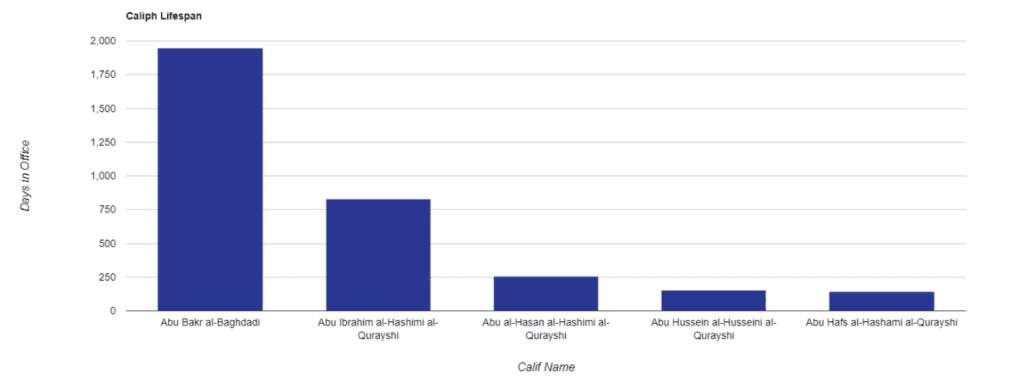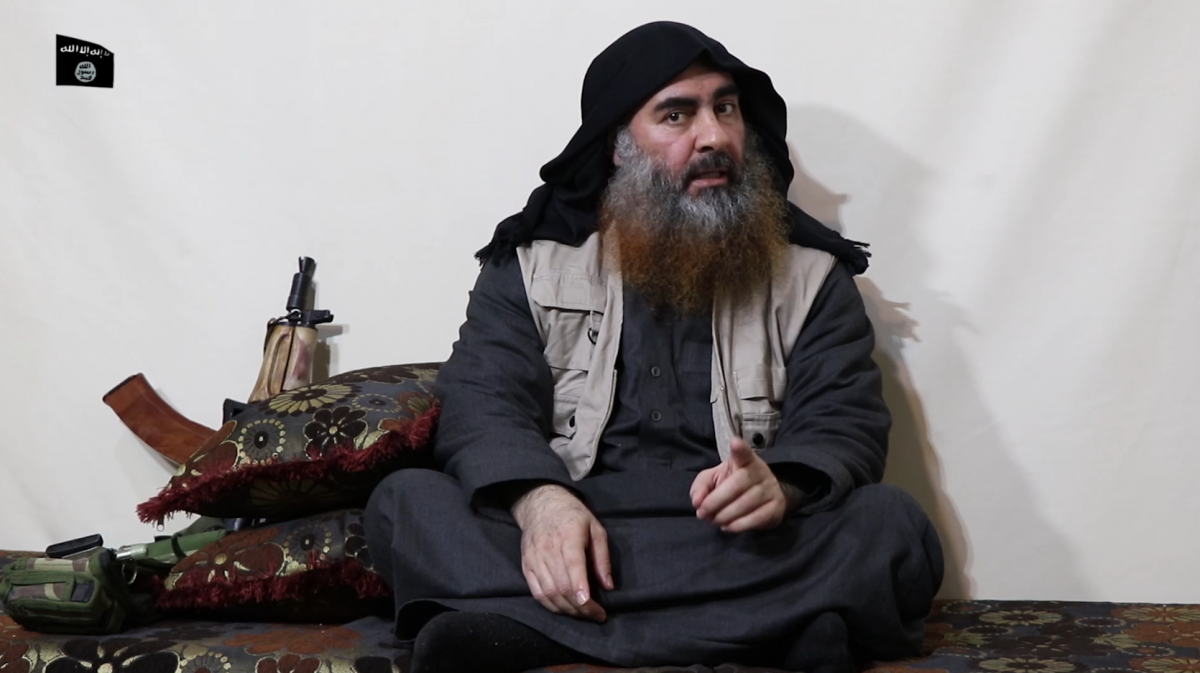The historic role of Calif is as spiritual as political; the supreme authority commanding believers of the faith. While the appointment itself has been subjected to debate/evolution through time, leaders of the great transnational empires (from the Rashidun to the Ottomans), have striven for the successorship ideals of universality, righteousness, glory and resistance. Religious texts explain the role of al-Siddiq in the early Califate, and how he enabled the consolidation of the Arabian Peninsula, setting the conditions for expansion into Persia. Unlike the Califs of old, current IS leaders are void of a real world persona; their fighters and supporters do not (indeed cannot) know the identity of their leader.
The faceless nature of IS degrades the identity of the group. Anonymity does not come from divinity, rather from the practical concerns of espionage, degradation, and lack of public support. With the fall of Mosul and Raqqa, and the collapse of over 95% of territory, Haider al-Abadi declared victory over IS in Dec 17. Continued military pressure since has seen a decline in their international reach, degrading the command/control structure, decreasing tax raising revenues, alienating the to draw foreign fighters, and isolating their influence. The increasingly rapid turnover has neutralized any influence the Calif has over operational strategy, and morphed the affiliate structure into a federated and flattened collective. Below represents the extent of this attrition, with a graph showing temporally just how impactful pressure has been:
• Abu Bakr al-Baghdadi was the first Calif of Daesh; he was in post for 1946 days. Originally joining AQ in Iraq, and rising to the group’s emir in 2010, he was instrumental in enabling the establishment of IS in 2014. His visible nature through a real world identity (Ibrahim Awad Ibrahim al-Badri) was a rallying call for the identity of a Caliphate, and while his legitimacy was heavily contested by scholars, the draw for foreign fighters lasted until he presided over the demise of IS in 2017. Ultimately though, he killed himself on Oct 19, during a raid conducted by the United States military in Idlib. Following an announcement from the US, IS confirmed his death within a week.
• Abu Ibrahim al-Hashimi al-Qurayshi was the second Calif of Daesh; he was in post of 827 days. His real world identity (Amir Mohammed Abdul Rahman al-Mawli al-Salbi) was not publicly known until Jan 20, and never confirmed by the group. Much like al-Baghdadi, his career stared in AQ, rising to prominence in IS through attrition in the groups leadership; he was designated a successor in Feb 19. Also like al-Baghdadi, he killed himself in Feb 22, during another raid conducted by the US in Atme. It took over a month before a replacement was announced, although IS still claim they had identified a successor within a week.
• Abu al-Hasan al-Hashimi al-Qurayshi was the third Calif of Daesh; he was in post for 254 days. There was uncertainty throughout the tenure over his real world identity (Nour Karim al-Mutni al-Obaidi al-Rifai), leading to an incorrect arrest in Turkey in May 22, forcing IS to release counterclaims through repeated issues of al-Naba. He also killed himself, this time during a Aug 22 raid conducted by Syrian FSA in Daraa. It again took over a month for his death to be announced by IS, and over three months for a replacement to be sourced; the group were struggling to designate a suitable successor.
• Abu Hussein al-Husseini al-Qurayshi was the fourth Calif of Daesh; he was in post for 151 days. Even now, there is limited information on his real world identity, and significant uncertainty over his achievements while in office. There have also been numerous claims over his death, most notably from Turkey in Apr 23, but IS did not formally confirm the news until Aug 23; it remains most likely that he was killed during a raid by rival group HTS.
• Abu Hafs al-Hashami al-Qurayshi is the fifth Calif of Daesh; for now, he remains in post. Much like his predecessor, there continues to be limited information on his real world identity. Extrapolating the life expectancy of prior Califs forward, his probable tenure is due to end on 15 Dec 23.
The five leaders above are not the historic leaders of old, nor do they preside over lands of a Caliphate. They lack identity, let alone religious/political authority, and struggle to be in post for enough time to make any significant change to an ever more bureaucratic and decentralized group. Without a clear loci for IS, how are the ‘rank and file’ to understand who they fight for, or even be confident that they are not part of a broader great-game. Abu Hafs must step from the shadows to be credible…



